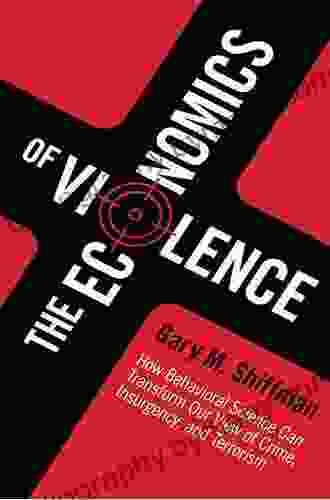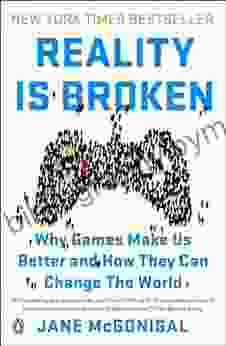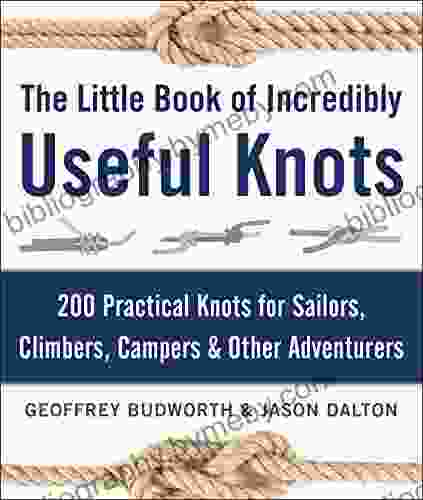Unraveling the Economics of Violence: A Comprehensive Exploration

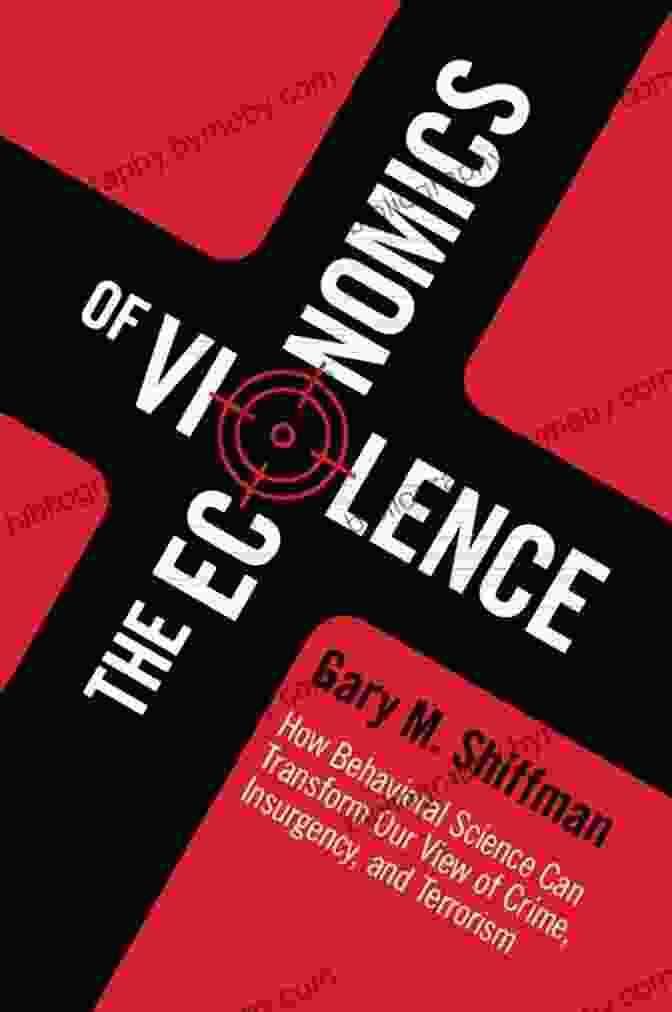
Violence, a pervasive and destructive force, has plagued societies throughout history. Its economic implications are profound, affecting individuals, businesses, and nations alike. "The Economics of Violence" delves into this complex subject, providing a comprehensive analysis of the economic consequences of violence and offering valuable insights into its prevention and mitigation.
4.5 out of 5
| Language | : | English |
| File size | : | 1643 KB |
| Text-to-Speech | : | Enabled |
| Screen Reader | : | Supported |
| Enhanced typesetting | : | Enabled |
| Word Wise | : | Enabled |
| Print length | : | 242 pages |
Economic Costs of Violence
Violence imposes a heavy economic burden on society. Direct costs include medical expenses, lost productivity, and property damage. A study by the World Health Organization estimates that violence costs the global economy over $1 trillion annually. Indirect costs, such as increased crime, social unrest, and diminished trust, are even more significant. These can lead to reduced economic growth, investment, and innovation.
Individuals and Households
Victims of violence face significant financial challenges. Medical bills, lost wages, and property loss can push individuals into poverty or debt. The trauma of violence can also impair mental and physical health, reducing productivity and well-being. Children exposed to violence are particularly vulnerable, with long-term consequences for their education and economic opportunities.
Businesses and Industries
Violence disrupts business operations, increases security costs, and damages reputation. Businesses in high-crime areas may struggle to attract customers or employees. Some industries, such as tourism and retail, are particularly susceptible to the effects of violence.
Nations and Governments
Violence destabilizes societies, undermines trust in institutions, and weakens the rule of law. It can lead to social unrest, conflict, and even civil war. Governments spend billions of dollars on law enforcement, the criminal justice system, and victim support, diverting resources from other essential services.
Causes and Drivers of Violence
Understanding the causes and drivers of violence is crucial for developing effective prevention strategies. "The Economics of Violence" explores various factors that contribute to violent behavior, including:
Economic Inequality and Deprivation
Economic disparities and poverty can create conditions ripe for violence. Individuals with limited economic opportunities and bleak futures may turn to violence as a means of coping with frustration or acquiring resources.
Social and Political Exclusion
Marginalized groups who feel excluded from society and denied opportunities may resort to violence as a form of protest or self-expression. Discrimination, segregation, and social injustice can exacerbate these feelings and increase the risk of violence.
Cultural Norms and Beliefs
Cultural norms, values, and beliefs can influence attitudes towards violence. In some societies, violence may be glorified or seen as a legitimate way to resolve conflicts or achieve goals.
Access to Weapons
The availability of weapons, particularly firearms, increases the likelihood of violence. Lax gun laws and unregulated markets can contribute to the proliferation of weapons and make it easier for individuals to commit violent acts.
Prevention and Mitigation Strategies
"The Economics of Violence" emphasizes the importance of comprehensive strategies to prevent and mitigate violence. Effective interventions should address both the root causes and the direct effects of violence. Key recommendations include:
Early Childhood Education and Intervention
Investing in early childhood education and intervention programs can help break the cycle of violence by providing children with a strong foundation for success and reducing their exposure to risk factors.
Economic Empowerment and Opportunity
Creating economic opportunities for disadvantaged individuals and communities can reduce the likelihood of violence by providing them with hope and a stake in society.
Social Inclusion and Community Building
Promoting social inclusion and community building initiatives can foster a sense of belonging and reduce feelings of alienation and marginalization.
Gun Control and Violence Reduction Laws
Implementing sensible gun control measures and investing in violence reduction programs can reduce the availability of weapons and make communities safer.
Victims' Support and Trauma Recovery
Providing comprehensive support services to victims of violence, including medical care, counseling, and financial assistance, is essential for their recovery and reintegration into society.
"The Economics of Violence" is a groundbreaking work that provides a comprehensive understanding of the devastating economic consequences of violence. By exploring its causes and drivers, and proposing evidence-based prevention and mitigation strategies, this book empowers readers to make informed decisions about how to create a more just and peaceful world.
Whether you are a policymaker, a researcher, or a concerned citizen, "The Economics of Violence" is an essential resource for anyone who seeks to address the devastating impact of violence on individuals, societies, and economies. By investing in violence prevention and mitigation, we can break the cycle of violence and build a future where all individuals can live safely and prosper.
4.5 out of 5
| Language | : | English |
| File size | : | 1643 KB |
| Text-to-Speech | : | Enabled |
| Screen Reader | : | Supported |
| Enhanced typesetting | : | Enabled |
| Word Wise | : | Enabled |
| Print length | : | 242 pages |
Do you want to contribute by writing guest posts on this blog?
Please contact us and send us a resume of previous articles that you have written.
 Book
Book Novel
Novel Page
Page Chapter
Chapter Text
Text Story
Story Genre
Genre Reader
Reader Library
Library Paperback
Paperback E-book
E-book Magazine
Magazine Newspaper
Newspaper Paragraph
Paragraph Sentence
Sentence Bookmark
Bookmark Shelf
Shelf Glossary
Glossary Bibliography
Bibliography Foreword
Foreword Preface
Preface Synopsis
Synopsis Annotation
Annotation Footnote
Footnote Manuscript
Manuscript Scroll
Scroll Codex
Codex Tome
Tome Bestseller
Bestseller Classics
Classics Library card
Library card Narrative
Narrative Biography
Biography Autobiography
Autobiography Memoir
Memoir Reference
Reference Encyclopedia
Encyclopedia Sarah Mirk
Sarah Mirk Niki Ahrens
Niki Ahrens Jeffrey Ross
Jeffrey Ross Geoffrey Robertson
Geoffrey Robertson Robert Mcg Thomas
Robert Mcg Thomas Sheryl Lynde
Sheryl Lynde P T Barnum
P T Barnum Meridee Winters
Meridee Winters Gabriel Kline
Gabriel Kline Gary Robert Matthews
Gary Robert Matthews Sharon Baranoski
Sharon Baranoski Gerald Sherwood
Gerald Sherwood Geeta Anand
Geeta Anand Marian Filar
Marian Filar Gareth Russell
Gareth Russell Frimette Kass Shraibman
Frimette Kass Shraibman Margaret Mayo
Margaret Mayo Joe Harkness
Joe Harkness Sujatha Gidla
Sujatha Gidla Joan Heilbroner
Joan Heilbroner
Light bulbAdvertise smarter! Our strategic ad space ensures maximum exposure. Reserve your spot today!
 W.H. AudenFollow ·5.2k
W.H. AudenFollow ·5.2k Owen SimmonsFollow ·14k
Owen SimmonsFollow ·14k Paul ReedFollow ·17k
Paul ReedFollow ·17k Robbie CarterFollow ·3.3k
Robbie CarterFollow ·3.3k Danny SimmonsFollow ·18.8k
Danny SimmonsFollow ·18.8k Eli BrooksFollow ·8.8k
Eli BrooksFollow ·8.8k Frank MitchellFollow ·14.2k
Frank MitchellFollow ·14.2k Eugene ScottFollow ·5.6k
Eugene ScottFollow ·5.6k
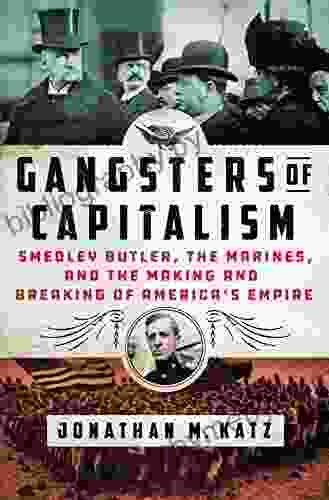
 Brian West
Brian WestSmedley Butler: The Marines and the Making and Breaking...
: A Marine's...

 Gabriel Garcia Marquez
Gabriel Garcia MarquezIschia, Capri, Sorrento, Positano, And Amalfi: An...
Explore the...

 Felix Carter
Felix CarterAdorn Your Little Princess with Fleur Ange's Exquisite...
Welcome to the enchanting...

 Kelly Blair
Kelly BlairUnveiling the Secrets of the Historical Way and Fishermen...
Step into the pages...

 Angelo Ward
Angelo WardKnit the Cutest Thumbless Mittens for Your Little One:...
Prepare to be...
4.5 out of 5
| Language | : | English |
| File size | : | 1643 KB |
| Text-to-Speech | : | Enabled |
| Screen Reader | : | Supported |
| Enhanced typesetting | : | Enabled |
| Word Wise | : | Enabled |
| Print length | : | 242 pages |


